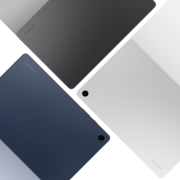It’s no mystery that at least a fraction of the reason why OS updates are delayed for many devices boils down to the custom UIs manufacturers place on top of Android. The rest of the delay is made up of tailoring the new OS for each device and then adding in various carrier and OEM applications and tweaks. But love it or hate it, custom interfaces like HTC Sense and the artist formerly known as MotoBlur are here to stay. OK, so why not let users have the option of turning the custom skins on and off? While that is still a possibility for manufacturers to consider, Google CEO Eric Schmidt spoke out on the matter saying the company would never force partners to run a certain iteration of Android.
He went on to say that the whole notion was in contrast to the very foundation of open source, an aspect that Android boasts quite proudly. Schmidt said, “if we were to put those type of restrictions on an open source product, we’d be violating the principle of open source.” Now many would argue Google likes to pick and choose just how open Android really is with certain aspects like the inclusion of the Android Market or the ‘with Google’ tag being left up to the whim of the search giant, but fair enough. The actual code is freely available and the large developer and hacker community around Android is a testament to this.
We like to think of Android as open source in its ideals but capitalistic in its goals, which is just fine. Would certain people (me included) love to see the option of running stock Android on all devices (including the fantastic hardware HTC consistently puts out)? Absolutely, but there is always root and ROMs for that. Or the T-Mobile G2. But what do you all think? Should stock Android always be an option on the devices you choose? Let us know in the poll below.
[polldaddy poll=3816888]
[via Engadget]










It’s the OEMs choice. Bottom line. That’s the definition of open.
What really gets me about that philosophy is that Android isn’t 100% open source for Google Experience phones. In order for a device to be able to include the Android Market & Google Apps support it has to be approved by Google & meet certain requirements. Why couldn’t Google simply add the ability to choose between stock Android & the manufacturer UI as a requirement?
Problem solved, when do I get hired at Google?
I like the Vanilla on mine, but would never want that to be the only option. Open source empowers improvement so that should never be censored. Having the ability to turn on stock settings would be cool though. Very cool T-Mobile is still dedicated to offering a stock phone as well, seeing they were the first to open the door to Android.
I actually agree it’s the OEM choice but in an ideal world the customer should have a choice as well. I’ve been waiting for a good vanilla phone. I saw my coworkers EVO and as cool and fast as they are, the idea of using all the HTC garbage software has made me avoid it. I’ll wait for something that fits “me” and if manufacturers and carriers don’t give me that option then maybe* gasps* Nokia or windows phone 7 could fill that roll.
There are options already in the form of aftermarker launchers in the market.
Yeah, but the requiring people to use a custom UI skin without giving them the choice to turn it off isn’t violating the Open Source Principles?!
I understand not making it required to run stock android but what about making it POSSIBLE to run stock android instead of the crap UI’s they most manufacturers are putting out
Its all about choice. Not everybody likes the skins but may love the hardware, why make us suffer when we don’t need to?
If there were no custom ui skins, you also wouldn’t have some very cool features (HTCs pinch for panes comes to mind) .I think its good to manufacturers to innovate on top android because it makes for ridiculously cool cooked roms with features from everywhere. For example, I have the HTC sense pinch feature but also Samsungs touchwiz right to left scrolling for apps after using launcher.
It should be as Linux is, Debian models in particular such as Ubuntu. A git repository of kernel modules, applications, and libraries. OEM’s can place their UI’s and modifications on their phones, but there should still be a master GIT repository in which you could load the UI, applications, and Kernel modules of your choosing. The kernel should support all hardware through module plug-ins, leaving the main sections of the kernel untouched, so as not to have an over-sized kernel, but to support multiple phones non-the-less. I do not understand why this was so difficult to understand, or why they strayed from the common Linux path. This is the way Linux has been, and any derivative of it should be…
While OEM’s should not be forced to load a specific UI, they should be forced to NOT LOCK YOU TO a specific UI. OEM’s need to stop putting these restrictions on there phones, Motorola went to the point where they locked their bootloader with the Droid X… Thanks… No custom kernels, no true ROM’s, we are now stuck with what Motorola wishes us to have… I originally liked android because I wasn’t being controlled by one entity’s wishes (Steve Jobs…), now it has become controlled by whatever the OEM’s wishes are… What is the difference at this point… Come on Google, don’t require them to use your UI, just require them to keep it open…
Well, the only thing I really hate about my DX is the eFuse .. I don’t care if Moto, HTC, Samsung or whomever puts a custom UI on THEIR product but why be a bunch of asshats and put a lock so that one can’t mess with the hardware that has been purchased. Now that sucks.
They need to do the option that speeds up Android OS updates as much as possible.
We’d all like the option, but the man’s one hundred percent correct. Most people who want to be able to use Vanilla will be rooted anyway, but as for consumer choice, it might make sense for Google to do a survey and then RECOMMEND the option.
Why does HTC put sense on a device? They believe that by “Branding” the user experience they add value to the product. That customers will, for example, say … my friend has a phone with Sense, I want Sense on my phone too. The question is, are they correct? Does Sense add value to the device? I don’t think so, but I run CyanogenMod on my DInc, so maybe I’m not the target demographic.
Google is missing the bus here. They need to own the Android Brand. Make the OIMs and compete on quality and price of the hardware. Make the carriers compete on the Quality and price of Network access. The OS on the phone must be standardized. Sure, a couple of widgets and some bloat ware are acceptable, but the core user experience of the Android will need to be uniform. If it’s not, Google will lose this space.
I like some of the Custom UI’s. What I hate about them is the delay that add to updates. Having the option to turn them on or off wouldnt make a difference because they’d still be there and would STILL impose the same delay.
Ship devices with custom UIs but make mandatory the ability to easily install standard Android.
That’s open.
The problem with Google CEO Eric Schmidt’s noble sentiments is that it is NOT OPEN! I don’t give a damn what the carriers want in terms of choice. I – the end user should have the choice. There should be the choice between the “Google Experience” stock Android OS & the carriers rendition of the Android OS. This isn’t hard if Google would make the proper investment.
In a perfect world it would be more like Linux desktops in the sense that we can choose whatever hardware we like then pick which flavor of Android we want to run on it. So if I wanted to run Sense Android on the Motorola X then it would be possible.
But the biggest problem is that their custom flavor is baked into the ROM. Sure I can download a custom launcher like LaucherPro and disable Sense (or whatever). But the problem still remains that Sense is still physically on my device, uninstallable, taking up space in memory.
While as Android users we’d all like to live in that perfect world above its most likely never going to happen. However a descent compromise would be making ROM baking more acceptable and not voiding your warranty.
I know mobile is different than pc. But in comparison I know reloading a Toshiba laptop with Linux as opposed to Win7 that it came does not void my warranty. Oh I get no support all right but my warranty still exists. In fact all they need to do is provide us with a restore cd to reflash our phones if we brick it. That would be a step in the right direction.
I think thats what it comes down to. We ain’t gonna help ya if you do it. But if you do and you brick it or find you want to come back here’s a recovery cd.
i think they should do this; run stock android with the option of their UI(as opposed to the other way around.) then, put their UI on the market as a paid app. talk about open. let me run an epic with sense. or an EVO with motoblur. and no im not talking about some imitation rom that was baked up by a third party, i mean let me choose which one of the UI’s i want to use.
IMO this would open up a whole new revenue stream to manufacturers. not only would they be able to make money from people buying their phones but now people with other phones could buy software from them too.
I would argue that consumers do have a choice. If you don’t want a phone with a custom UI and would rather have vanilla, the consumer doesn’t have to buy the phone with a custom UI. It is as simple as that. If enough people don’t want it the manufacturers will change their implementation of the OS. It boils down to supply and demand.
@Craig
Supply and Demand economics just don’t apply for this case. If the ONLY option is a custom UI, how can you accurately calculate demand for vanilla android? N1 was vanilla but it was on a phone that hardly anybody knew anything about. OG Droid was vanilla and it sold like hotcakes (far more than motoblur Droid 2). What other options have there been? The phone manufactures aren’t giving anybody the choice. It’s custom UI or nothing. People want smart phones and I would say most of those people don’t have the knowledge that their custom UI might cause problems for them. I don’t think you can reasonably characterize this scenario as “customer do a have a choice”. They’re not being offered the choice.
Personally, I love stock Android… and that’s one of the reasons I have a Nexus One. But quite frankly, Google cannot stop custom UI skins by OEMs and they shouldn’t have to. Yes, it would be nice to be able to turn of this custom UI. I guess each OEM likes to leave it’s trademark on more than just the hardware. And in a way, it adds variety to Android beyond just hardware. Not everything in Android needs to be open source… not everything can be. People say customers choice, but I don’t see that as a hurdle. There are so many Android phones, so the customer really has a choice. I guess the biggest hurdle is the carrier restrictions. If phone were not carrier specific, consumers wouldn’t be “stuck” with a particular custom UI Android phone…
I think the poll is a little bit misleading. I would vote that OEMs should allow the option to run vanilla android, but I would not vote that Google should require them to. That’s the great thing about Android. It’s open and free. You can add whatever you want to it and call it improved. I think OEMs should consider the needs of their users and give an option to turn off the “improvements,” but that should be something they decide to do, not something Google enforces. One concern with this plan however, is that the update process would get even longer.
In my opinion, I think there is disagreement about what constitutes open source in this context. Android is open source. Anyone can take the source code and do anything they want with it. The carriers *aren’t* open source, and as far as I know, don’t claim to be. In my opinion, they can do what ever they want with the code (just like me) and I can choose whether or not I want their phone.
What I don’t like is the carriers installing bloat that can’t be uninstalled. It’s using resources that are advertised but effectively made unavailable to me. I can live with bloat as long as I can delete it after purchase. iOS has bloat too (that can’t be uninstalled) but as he said, Apple is using effectively the exact opposite business model. Regardless, I don’t blame Google for this.
Viva la Bugless Beast.
Honestly, if you don’t like what the phone has to offer, then don’t get the phone. To many complaints for no reason. It’s open source so the devs can do what they want. If you don’t like it. Don’t get it!
I believe you are all arguing really about the problem that exists in the US, namely a couple of carriers really call all the shots. Their monopolistic ways prevented Google from disrupting their business with Nexus One. Nexus One was Google’s way of saying, here is an Android Experience device without the bloatware but to get it, the carriers refused to carry it (except T Mob) because they were too afraid of the end user figuring out that they are being screwed into a 2 yr locked contract at an inflated all in price. So Google was forced to play nice with the carriers and in order for the end user to get the subsidized price $100 to $ 200 up front instead of the $600 for the pure Experience phone, the user had to put up with the inflated all in price after 2 years and the bloatware/customized UI. Bottom line: if you don’t like the status quo, contact your congressman!
Lord, you phonies need to learn the business world better. I hate to start off a comment as a troll, but let’s do a little lesson.
1. Google does not own Android. Android is not Google. Android is maintained solely by the Open Handset Alliance (OHA). Google is a partner, and yes they are also the lead developer.
2. Google does not want to force anyone to do anything with Android. Why? Because Google doesn’t make a dime from Android. Google makes money with Google products, like Google Maps, Google Search, Google Mail, etc, etc. Anyone can take Android and fork it from the OHA tree. Anyone. You can then go and create your own competitive phone, apps, whatever you want. You can fork Android into Bidroid and make it completely incompatible with Android apps. You can install it on your new toaster device.
3. Developers who are part of the OHA are committed to sticking with OHA’s Android source tree, but anyone at any time can take Android and run with it and not pay a fee to anyone. If they want to offer compatibility with most APKs, they will stick with OHA’s Android.
Android is like the *nix community. The various versions of *nix (Linux, even BSD and other OSes) are not fully compatible with each other, but anyone can take the code, modify it to their heart’s content, and re-release it as their own forked branch.
Repeat after me: Google is not Android. Android is not Google. Google Apps are not Android, they are Google’s.
While the issue of late updates is a problem, the issue of whether you like the useability of the custom skin is not as you can always install Launcher Pro or ADW Launcher and never have to use it.
@Dave: yes you can install any home screen / launcher replacement. The problem is you can NOT UNinstall the custom ui or bloatware that comes with the device and therefore not able to regain the resources the it’s advertised to have.
That’s right. Open Source doesn’t mean a free for all that the end user gets whatever they want whenever they want it. Sorry Veruca. It means that the source code is available, you can modify it and submit your modifications. That’s all.
It may be the manufacturer’s choice, but it is Google’s choice not to provide a Vanilla Android Home Replacement in the Google Marketplace, one that basically turns any custom Android UI back to fully standard Vanilla type UI.
Launcher Pro or ADW Launcher are probably fine, I haven’t used them. We need Google to simply release an official Home Replacement in the Google Marketplace so any Android device can get the official Vanilla Android UI.
A few friends and I are having a heated discussion about cell phone security. Like it or not it is the future of malicious software and Android will be the #1 target as the #1 platform. Just yesterday my friend pointed out two security flaws. One in Flash, the other in the Android Kernel. The Flash one was fixed a few days ago and I already updated (though a new update came out today as well so I wonder how good the first fix was). The kernel issue I just fixed today when the new 2.2.1 system came out for the Nexus One.
Does anyone else have the kernel issue fixed? NO. None of you do. And this constituted the biggest problem here. Updates are lagging ridiculously for all products but the Nexus One. (Can’t speak for cooked ROMs.) And while the general annoyance of not having the state of the art OS is the first thing that comes to mind, I worry more about the security concerns. I do not want to wait for Samsung, Motorola or HTC to customize their add ons to the new OS version while my phone becomes a target of possible malicious software.
Something absolutely has to change. Security updates must come fast, over the air and independent of OS version. The current system where they come in OS updates absolutely cannot continue, especially if we have to wait until 2011 for some manufacturers to update to something that was outdated 6 months prior. If this system is not fixed, that will lead to the demise of mobile smart phone computing (at least with Android). While I fully agree with E.S. on the principles of open source, requirements of some security standards is a must for devices that they give their own brand names to. Otherwise the brand suffers. And better infrastructure is needed for everyone else so (in hopes of keeping customers happy looking at that next phone upgrade) companies have a way of fixing small but important security issues without reworking the entire OS, tailoring it to the specific phone and making sure their non-stock crap runs on it.
I really would like to see this issue discussed in greater detail, possibly in a post with appropriate discussion afterwards. I do not think it will get the attention it deserves as pst #33-ish to something somewhat closely related.
Why doesn’t Google take the good bits from each of the manufacturers custom UI and incorporate similar functionality into the stock Android. Then manufacturers may turn to customising Android in a much lighter way (e.g. themes, wallpaper etc, icons etc). This will really reduce the turn around time for releasing new Android updates to handsets. It should also reduce manufacturers costs as there will be less development.
I don’t know if this has been said but personally would prefer a fourth option in the poll which would probably sound something along lines of “Custom UI with option to turn off skin, run stock Android or install and run other Custom UIs”. This due to the large number of Android based UIs that could be found out there that appears to be both cool looking and functioning. Especially those that are developed by TAT (The Astonishing Tribe).
I do realize that this might very likely cause a drain on the phone’s memory. I’m not that knowledgeable with regards to mobile phone tech (or any other tech) for that matter and as such am not quite sure of whether one can install and run another Custom UI from the memory card. With of course the downside being unable to access your games and music (should you have these stored in your memory card) and with most mobiles only having a single card slot.
Not sure how easy/ difficult it is relatively to root an Android phone (never done it before) and install the interface you’d prefer or similarly how easy/ difficult relatively to restore to the ‘default’ settings.
The real issue isn’t that Google can’t force vanilla, it’s that Google can’t force the OEMs to open-source their modifications.
That way, even if Google thinks it’s a good idea, they can’t incorporate the code.
This is why FREE software is better then open source software. If Android was released GPLv3 (FREE software) not Apache (open source). The manufactures or the carriers could throw whatever shit they want on the device but the user could put a stock ui on it because there could be no no locked bootloaders or anything stopping people from altering their devices. This also is why Linus is a fucking retard for fighting the gplv3 and not trying to move Linux to it.
It’s the OEMs choice and I’m fine with that.
But it should be _our_ choice to change the OS on our phones and we shouldn’t have to rely on risky root operations to do so. We own the hardware. I should be able to install whatever OS I want on it easily.
Android is written in the bsd license, it is open source (the source is available) to force oem’s to not manipulate the code would be contary to the license and cease to be open source.
Still, it would make more sense for oem’s to write their themes as apps so they would have less conflict with updates. Then all you would have to do is change the bar color and icons which I could do in a day, heck you don’t even need to be skilled to do that.
Dear Eric Schmidt,
I’m still waiting for an update for my Magic “Google Experience”!
WTF! My first and last Android phone…
You want Stock Android get a Nexus One or a G2, OEM can do whatever they want to there phone they are also responsible for updating their phone Stock Android or Extremely UI’d its really pretty simple. Google Updates Nexus One all other Manufacturers update their phones if they CHOOSE TOO! OPEN SOURCE! IF YOU DONT LIKE IT, ROOT & ROM IT!
Android is GPL same as WordPress. But I don’t see versions of wordpress all over with different themes that don’t let you change your theme, or go back to the default one.
Android needs to be more like WordPress, where you get the default version, and then you can customize it however you want. That’s the kind of “openess” I want – not one where carriers and manufacturers can lock users in with their own skins of limited versions of Android.
All i could really hear was TAP TAP TAP TAP TAP TAP TAP…..freaking keyboard pounding lol.
What a crock of schmidt… Open source means the OS is available to anyone who wants it and for anything they want to do with it, but it doesn’t mean google has to provide support for non-vanilla hacks like sense and touchwiz. Google could very easily increase vanilla adoption by limiting support for manufacturers who modify the OS. There are no ‘principles’ of open source that define the support model for people who fork your software and sell it as their own. Schmidt and Page are typical evil corporate fucks. I’m really sad to see what they’re willingly doing to google’s legacy while brin cowers in the corner.
@Levi
I predict your security concerns will ultimately drive different behavior, but we’re going to have to feel the negative effects before anything really happens. Better make sure you’ve either got a nexus one or a device with custom rom that has lots of enthusiastic development support to weather the storm.
I like my phone and I like the Sense UI. I have no plans on rooting my phone or getting rid of sense. With that said and while I respect the notion of open source; the idea of having options does not conflict with the fundemental idea of open source.
Most people who use Windows don’t get the free aspect , they think you have to pay and pay for a OS and it belong to Bill Gates.
So now you have the Windows drones picking up a Android device and expect it to be locked down , “Support the Free” is just that , Linux is free and open source , if you close that opening it becomes a Window .
If the GUI is open source and can be changed , then it is okay , open source is about choices and freedom , not propitiatory closed control .
Well said, Levi. Security is going to be a serious issue. I’m amazed Google (and partners) don’t seem to have any plans in place to deal with this obvious problem. A network-connected operating system with no rapid, uniform update solution is a disaster waiting to happen.
.
I’m glad I have a Nexus One.
Wow, congratulations of finally bringing up something more serious and interesting than useless and endless phone announcements.
My iPhone is sooo much better than this. I feel bad for you guys.
@Brad, define “the good bits”. That’s exactly what open source is about. Things can get incorporated into the baseline. The problem is, not everyone agrees what “the good bits” are.
I miss the 5th option from the poll. Namely: IDC.
As long as I can root the device and make it my own they can load whatever bloatware they want on the device.
being open is to have an option to have cutsom ROMS,
my android is MY Android, my friends iphone is everyone’s iphone… if you see his phone and anyone else’s iphone, they’re all the same interface… as for android, i havnt seen anyone with the exact same preferences as mine…
its totally customizable, whether u’re running stock or ROM
After seeing the poll results, I conclude that Manufacturers need to see this poll and consider the result of the poll. The overwhelming majority would like the CHOICE to turn off the custom UI. This is something that OEMs should not take lightly.
Isn’t it as simple as making the vanilla home screen/launcher (whatever they’re called) app available in the Android Market, where the user can then install and choose it if they want to. Kinda like how they did with Google Maps and now the Gmail App.
@Jake 1000% agree, can we stop this madness now!? It is 100% the manufacturer’s decision and if they’re in cahoots with the carrier, their decision as well.